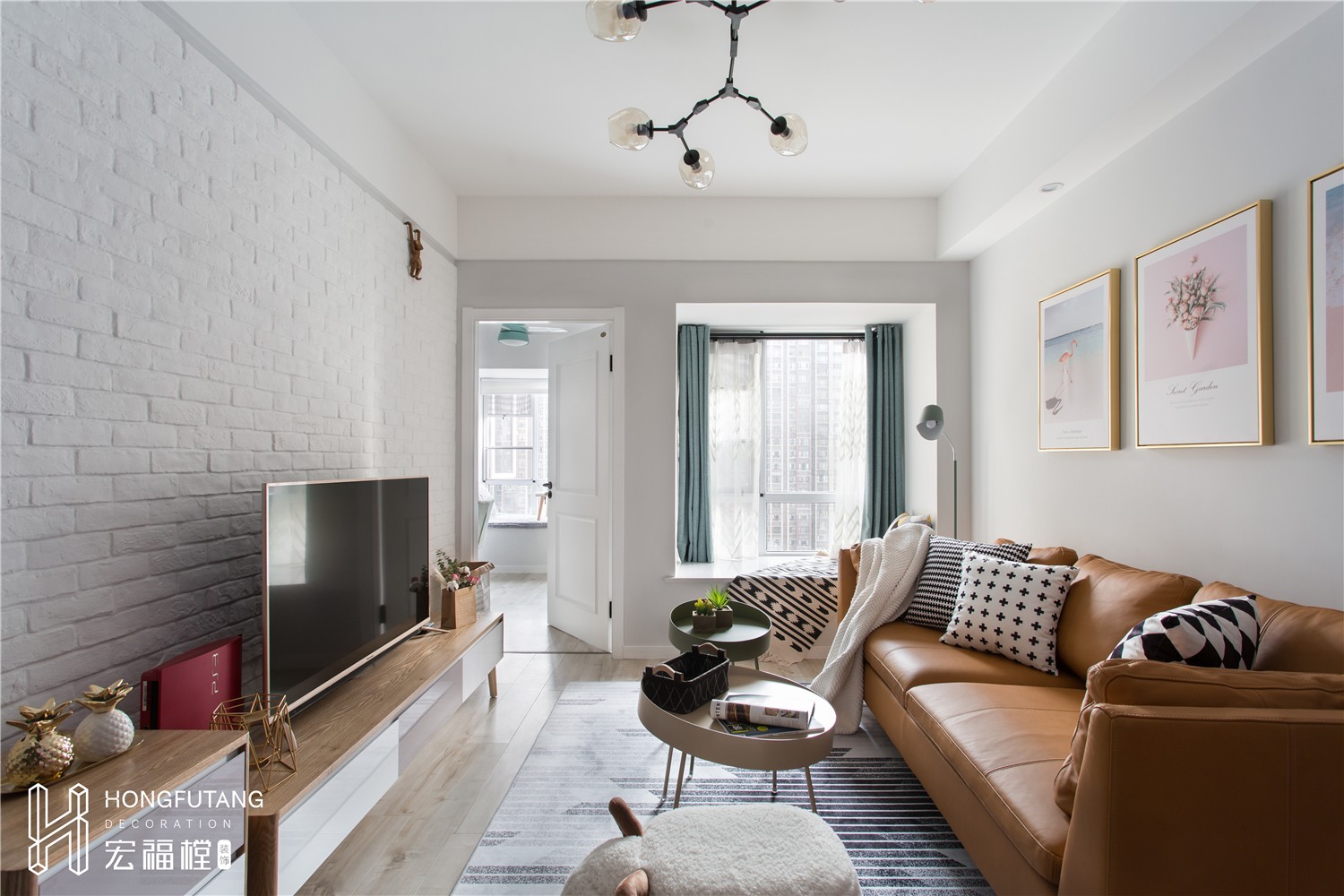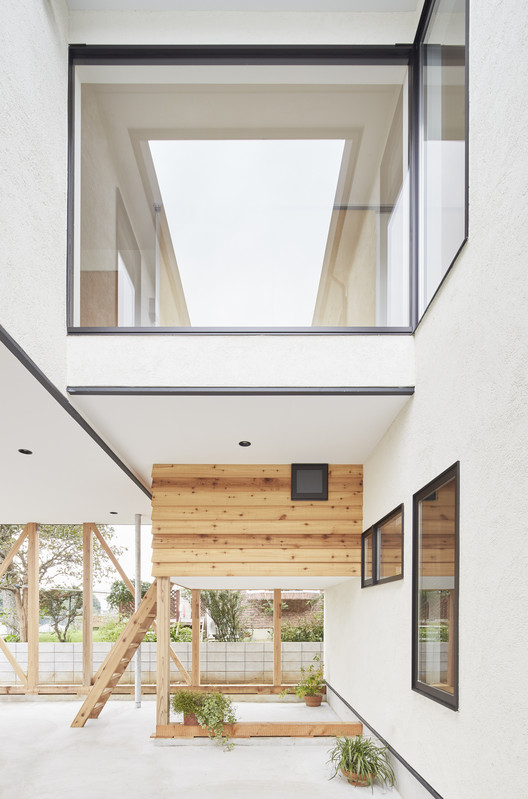An Engineers House ESSTEAM
2018-05-17 22:00
Engineering & Fabrication Janak Mistry ( Lexus Softmac) Structure Designer SMV Consultants Electrical Consultant & Contractor Crony Electricals Landscape Consultant Earthscapes Horticulturist Karmaveer Bhatt (Palash Associates) Civil Contractor Chirag Shah (Shah construction) Plumbing Contractor Mujavar Carpentry Contractor Sohanlal Stone Works Prakash Chauhan More Specs Less Specs
遇到工程师作为一个设计师,这个项目是这样一个难得的机会,客户自己能够在设计过程中作出贡献,以达到无法想象的协同水平,无论是个人-建筑师和客户。“工程师之家”是一个案例,客户是一位杰出的机械工程师,也是制造非常高端钻石加工相关机器的全球领先者,他向建筑师提供了他所有的知识和基础设施。在第一次会议上,我们同意通过有意义的工程解决方案解决问题,创造一座能够推动建筑设计极限的房子。传统的门扇、吊扇、秋千、电梯、地热冷却、百叶窗和许多其他元素都受到质疑,其结果确实值得注意。然而,对我们来说,这个项目的成功在于这样一个事实:这些庞大的产品设计和开发活动都没有为一个由四个人组成的同样美妙的家庭创造如此美好的生活空间。事实上,每一个工程奇迹,都增强了每个家庭成员拥有一个伟大的家庭和个人时间的总体经验。整个房子也是一个旅程,做一切正确和可持续的真正意义上的事情。
MEET THE ENGINEER As a designer, this project was one such rare opportunity, where the client himself is able to contribute in the design process to reach levels of synergy which is unthinkable for both as individuals - the Architect and the Client. ‘The Engineer’s House’ is a case where the Client, a brilliant mechanical engineer and a global leader in manufacturing of very high end diamond process related machines, offered all his knowledge and infrastructure to the Architect’s disposal. In the first meeting itself, we agreed to a vision of creating a house which pushes the limit of architectural design, through meaningful engineering resolutions to issues. The conventional paradigms of door closer, ceiling fan, swing, elevator, geothermal cooling, louvers and lot of other elements were questioned and the outcome is truly noteworthy. However, for us, the success of the project, lies in the fact, that none of these mammoth product design and development exercises, came in the way of creating such wonderful living spaces for an equally wonderful family consisting of four persons. In fact, each of these engineering marvels, enhanced the overall experience of having a great family and personal time for each family member. The entire house is also a journey to do everything that is right and sustainable in true sense.
该空间结构-1400平方码地块-是苏拉特新开发地区封闭式社会的一部分。这是一个街角地块,坐落在社会公共花园空间的正对面,南面和东面都有道路。在空间上,四人房别墅,是围绕两个开放空间-公共草坪和私人庭院。公共街区由一个单独的玻璃盒子组成,里面有客厅、餐厅、厨房和电梯,把一个搬到一楼的家庭房间。两边都有一个长廊空间,以保证循环和气候的舒适性。一个稍微倾斜的铜盒子漂浮在餐厅上方,这是家庭房间的所在。在公共街区之外,一个人爬了几步就进入了私人领域,那里有四个卧室围绕着一个庭院建造。祈祷空间是循环隧道的顶点,它沿着公共街区运行,然后穿过私人区域。
THE SPATIAL STRUCTURE The 1400 square yard plot is part of a closed gated society in the newly developed areas of Surat. It's a corner plot, located right across the common garden space of the society, with roads on the South and the East. Spatially, the four bed room villa, is organised around two open spaces - the public lawns and the private courtyard. The public block consists a singular glass box housing the living room, dining area, the kitchen and the elevator transporting one to the first floor family room. It is flanked by a long verandah spaces on both the sides, for allowing circulation and climatic comfort. A slightly inclined copper box floats over the dining area, which houses the family room. Beyond the public block, one climbs few steps to get into the private realm, which has the four bedrooms built around a courtyard. The praying space is the culmination of the circulation tunnel which runs along the public block and then through the private zone.
物理结构“工程师应该设计一个建筑师会羞于掩盖的结构”。-比尔·贝克,合伙人-就重要性而言,这所房子与调色板结合在一起,这是一种天然的,远离任何合成物的调色板。房子的无漆外壳是以成品混凝土的形式建造的。这种有趣的纹理是通过用皱巴巴的铝箔制作纤维模子来实现的,并在白天和夜晚创造出同样美丽的戏剧,回应来自不同方向的光线落在它身上。地板是大型抛光和皮革加工的科塔石材的结合。休息是所有天然阳极铝,玻璃,黑色花岗岩和柚木木材。铜板用于确定轴向移动隧道和浮动家庭房间。明亮的彩色紧凑型层压板已在一些门上使用,以增加尖锐的口音,否则,一个单调的灰色-银色的房子。
THE PHYSICAL STRUCTURE ‘An Engineer should design a structure that an architect would be ashamed to cover up’. - Bill Baker, Partner - SOM In terms of materiality, the house is wedded to a palette which is natural and far away from anything synthetic. The paint free shell of the house is constructed in form finished concrete. The interesting texture has been achieved through creating fiber moulds out of crumpled aluminum foils, and creates equally beautiful drama in the day and night, responding to the light falling on to it from different directions. The floor is a combination of large sized polished and leather finished Kotah Stone. Rest is all natural anodised aluminum, glass, black granite and teak wood. Copper sheets have been used to define the axial movement tunnel and the floating family room. Bright colored compact laminate sheet have been used in some doors to add sharp accents in an otherwise a monotone grey-silver house.
里面,外面和中间的百叶窗在苏拉特的地点只有大约10公里的阿拉伯海,并经历了炎热和潮湿的气候。作为对此的回应,包括四间卧室在内的每一个空间的南北都设计了可操作的百叶窗系统,从墙壁到墙壁都有一层可打开的玻璃层。这使您与景观有了很好的联系,房间里的微风也源源不断地流过。一个人几乎总是感觉生活在“奥塔”之上。这些百叶窗控制进入空间的光、风、雨和灰尘的数量,同时也防止窃贼随时进入。在这个活的街区里,这个想法已经向前迈出了一步,整个卢浮宫的框架被手动举起,变成了珀戈拉,这让人想起了一只张开翅膀的鸟。非常有趣的用户友好的机制,以提升和锁定百叶窗已经被设计使用的齿轮和杠杆的数量。
THE INSIDE, THE OUTSIDE AND THE IN-BETWEEN - THE LOUVERS The site at Surat is just about 10 km from the Arabian Sea, and experiences a Hot and Humid climate. As a response to that, the North and South of each space including the four bedrooms has indigenously designed operable louvers system with an openable layer of glass, from wall to wall. This allows a wonderful connection with the landscape, and an incessant draft of breeze flowing across the rooms. One practically feels living on the ‘Otta’ all the time. These louvers control amount of light, wind, rain, and dust entering the space; and also keeping the burglars out all the time. The idea has been taken one step further in the living block, where the entire louvre frames get manually lifted to become pergola, reminiscent of a bird opening up its wings. Very interesting user-friendly mechanisms for lifting and locking the louvers have been engineered using number of gears and levers.
利用白天,百叶窗墙在所有空间的北部和南部,使自然日光在所有这些可居住的空间一整天。此外,在生活空间和移动隧道中有许多天窗,以带来更多的日光。浴室有趣的努力,在各种类型的天窗,结合纹理混凝土墙壁创造迷人的用户体验。联网的屋顶太阳能光伏电池板产生了近8千瓦的电力,几乎满足了房屋的总电力需求。
EXPLOITING THE DAYLIGHT The louvered walls on the north and south of all the spaces enable natural daylight in all these habitable spaces throughout the day. Further to this, there are number of skylights in the living space and the movement tunnel to bring in more daylight. The bathrooms have interesting endeavors in various types of skylights, which combine with the textured concrete walls creating mesmerizing user experience. The grid connected rooftop solar photovoltaic cell panels generate almost 8 KW of electricity, which nearly takes care of almost the total power needs of the house.
通往天堂的电梯起居室有一个非常有趣的方形木平台躺在地板上,一个自行车座椅和一个支架上的桨。你猜对了,这是一部电梯,一次可以带三人到上层家庭房间,只有一人划桨才能做到这一点。这是一项非常复杂的工程,考虑到人类安全的各个方面,并在自行车上设置了电覆盖装置,给电梯打电话。这可能是世界上最环保的载人电梯。
THE ELEVATOR TO HEAVEN The living room has a very interesting looking square wooden platform lying on the floor with a bicycle seat and paddles mounted on a stand. You guessed it right; its an elevator which can take about three people at a time to the upper level family room, with one person paddling to make this happen. This is a very complex piece of engineering considering the various aspects of human safety and with a electrical override to the bicycle, to call the elevator. This is possibly, the greenest elevator for human transport in the world.
让卧室和客厅的一般照明都有光,设计了一个非常简单但有趣的灯具,计算各种角度以尽量减少眩光,并使空间中的光线最大化。餐厅还有另一个有趣的灯具,它是用带有窄光束LED光源的随机悬浮管设计的。
LET THERE BE LIGHT For the general lighting of the bedrooms and the living room, a very simple yet interesting luminaries has been designed, calculating the various angles to minimise glare, and maximise the light in the spaces. The dining area has another interesting luminaries designed using randomly suspended tubes with narrow beam LED light source.
当你进入任何卧室时,进化的Maharaja风扇,你会惊讶地看到巨大的皮革垂直挂在床上,一个复杂的金属组件固定在床上。这是一个现代版本的马哈拉哈风扇,传统上发现在美好的过去,当时没有电力和吊扇,我们今天看到。副产品是,装配帮助你控制皮革平面振动的速度,从而控制用户在房间中需要的微风量。
THE EVOLVED MAHARAJA FAN As you enter any bedroom, you will be surprised to see large piece of leather hanging vertically right over the bed with a complex looking metal assembly fixed to it. This is a modern version of the Maharaja fan traditionally found in the good old days when there was no electricity and the ceiling fans that we see today. The spinoff is that the assembly helps you control the speed of the oscillations of the leather plane, thereby controlling the amount of breeze the user needs in the room.
在项目设计的大部分家具中,我们的工作都是挑战工程的局限性,想出解决办法,大大增加人类的舒适度。其中一个例子就是客厅里巨大的水泥咖啡桌。咖啡桌看上去很大,但是用很薄的铁水泥和隐藏的蓖麻做的;小孩子可以毫不费力地移动家具。另一件有趣的家具是一张小长凳躺在走廊沿公共街区的房子。长凳是用独立的木块用张紧的金属绳绑在一起建造的。因此,当一个人坐在长凳上时,木块就会被移开,以适应坐在上面的人的轮廓。类似地,祈祷空间有一个有趣的铜盒,它能满足用户所有复杂的功能和存储需求,在祈祷之后,空间绝对整洁。床和衣柜展示了一些非常有趣的细木工和连接细节的实木。这个巨大的车库门(12米x2.4米)是用铝板建造的,但非常容易操作。
APPROACH TOWARDS THE FURNITURE DESIGN In most of the pieces of furniture that were designed in the project, the effort was always to challenge the limits of engineering to come up with solutions which add significantly to the human comforts. One such example is the huge concrete coffee table in the living room. The coffee table looks massive, but is constructed out of very thin Ferro-cement and with hidden castors; a small child can move the furniture piece with no significant effort. Another interesting piece of furniture is a small bench lying in the verandah along the public block of the house. The bench is constructed using independent pieces of wood tied together using tensioned metal rope. As a result, when one sits on the bench, the wooden pieces get displaced to accommodate the contours of the person sitting on it. Similarly the praying space has an interesting copper box, which takes care of all the complex functional and storage needs of the user, leaving the space absolutely neat after the prayer. The beds and the wardrobes exhibit some very interesting joinery and junction details in solid wood. The huge garage gate (12m x 2.4 m) is constructed in aluminum sheets, but extremely easy to operate.
这两个庭院-公共庭院和私人庭院-有着不同的景观方式,作为对使用的回应。公共庭院主要是一个草坪区,有一些土墩,与非常直线的建筑形式形成了一些柔和的对比。私人庭院有一棵有地板图案的树,一旦树长到更大的尺寸,就会反射出树枝的影子。后院主要是一个厨房花园。简单实用的收集和堆肥系统,以创造自己的粪肥,已经大大地帮助了绿色工程的增长。
THE GROWING GREENS The two courtyards - public and private have diverse landscape approaches as a response to the usage. The public courtyard is primarily a lawn area with some mounds to create some soft contrast to the very straight line building form. The private courtyard has a tree with the flooring pattern reflecting the shadow of the branches of the tree once the tree grows to a larger size. The backyard is primarily a kitchen garden. The simple practical system of collecting and composting organic waste to create own manure has been significantly helping the growth of the greens in the project.
更多的想法是创造家具的一部分,随着发展,精心设计的产品继续在大多数产品和家具件为房子设计。为儿子的房间提供一张书桌,如果不使用它,它就可以被关闭,以使空间变得整洁和最小,这是经过多次尝试才使之正确的结果。高架铜盒子是房子的一个非常重要的部分;家庭室。这个由“自行车电梯”到达的地方只使用一种基本材料-柚木,无论是储藏室、墙壁和天花板衬里、非正式座位还是储藏室。这间温馨舒适的房间正好是家庭最充分利用和最珍爱的空间!
LESS IS MORE The idea of creating pieces of furniture as evolved, and well engineered products continues in most of the products and furniture pieces designed for the house. A study table for son’s room which can be just closed when not in use to make the space neat and minimal is a result of a number of attempts to get it right. The elevated copper box houses a very important part of the house; the Family Room. This place reached by the ‘bicycle-elevator’ is created using just one basic material - Teak Wood; be it storage, wall and ceiling lining, the informal seating or the storages. This cozy and warm room happens to be the most utilized and cherished space for the family!
Lead Architect Snehal Shah, Nishith Jariwala
Photographs Ishita Sitwala
 举报
举报
别默默的看了,快登录帮我评论一下吧!:)
注册
登录
更多评论
相关文章
-

描边风设计中,最容易犯的8种问题分析
2018年走过了四分之一,LOGO设计趋势也清晰了LOGO设计
-

描边风设计中,最容易犯的8种问题分析
2018年走过了四分之一,LOGO设计趋势也清晰了LOGO设计
-

描边风设计中,最容易犯的8种问题分析
2018年走过了四分之一,LOGO设计趋势也清晰了LOGO设计



















































































































































